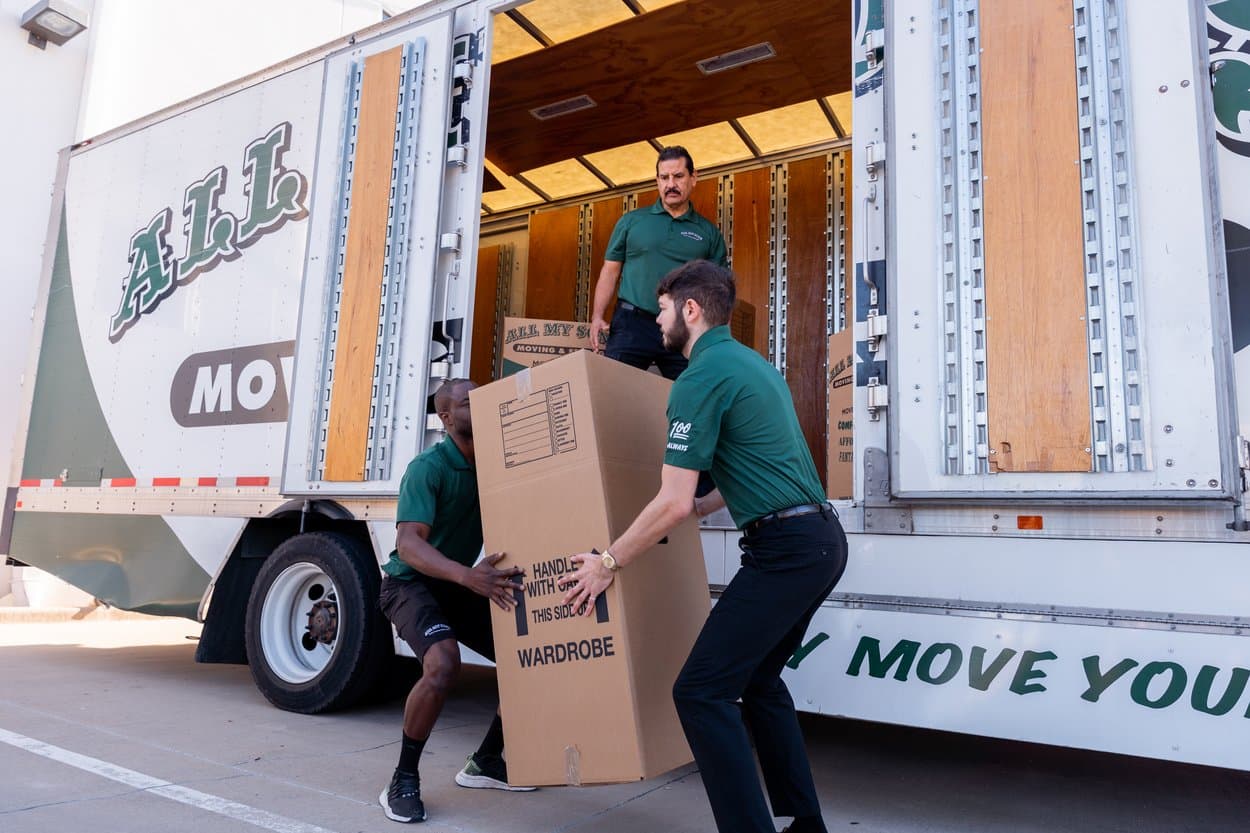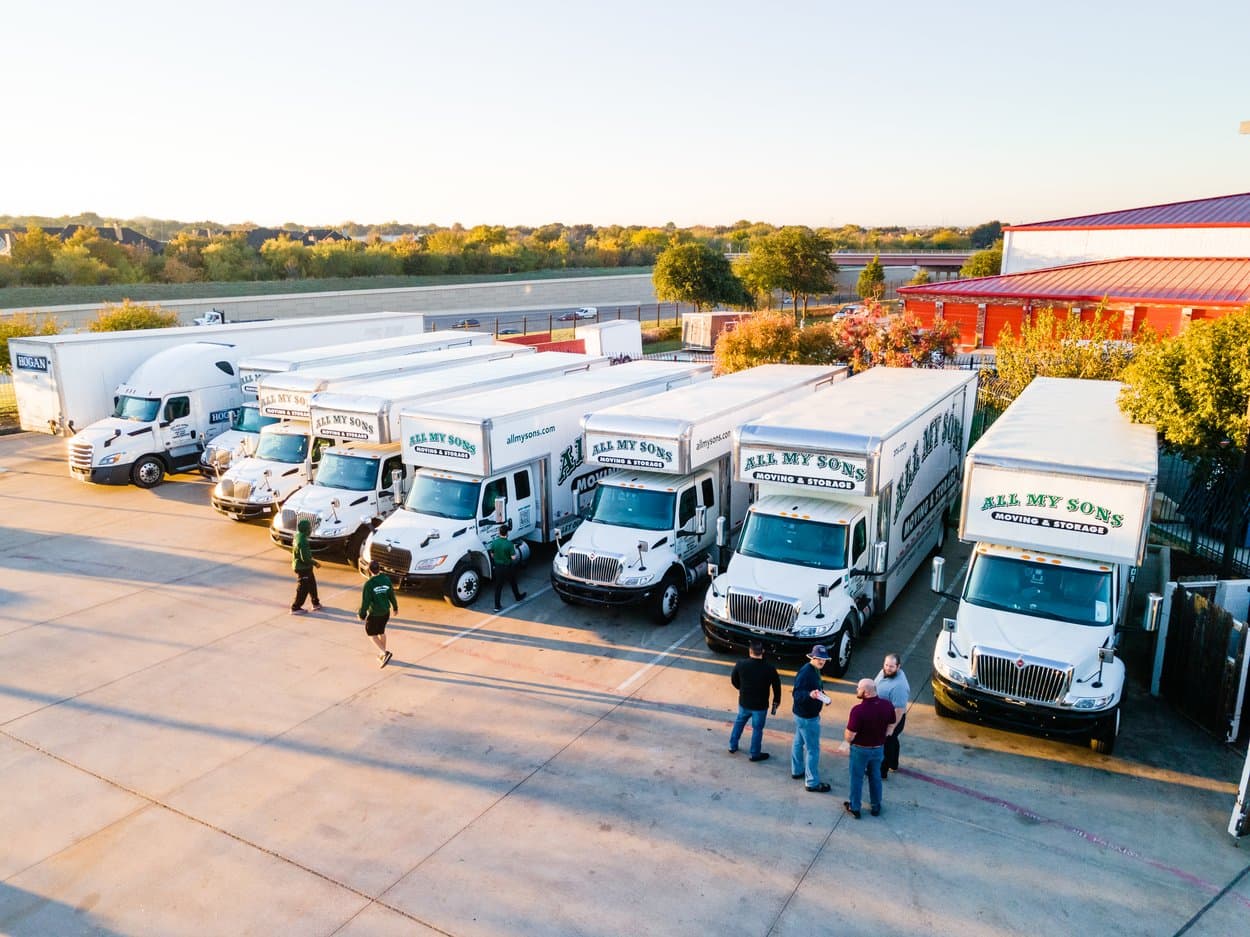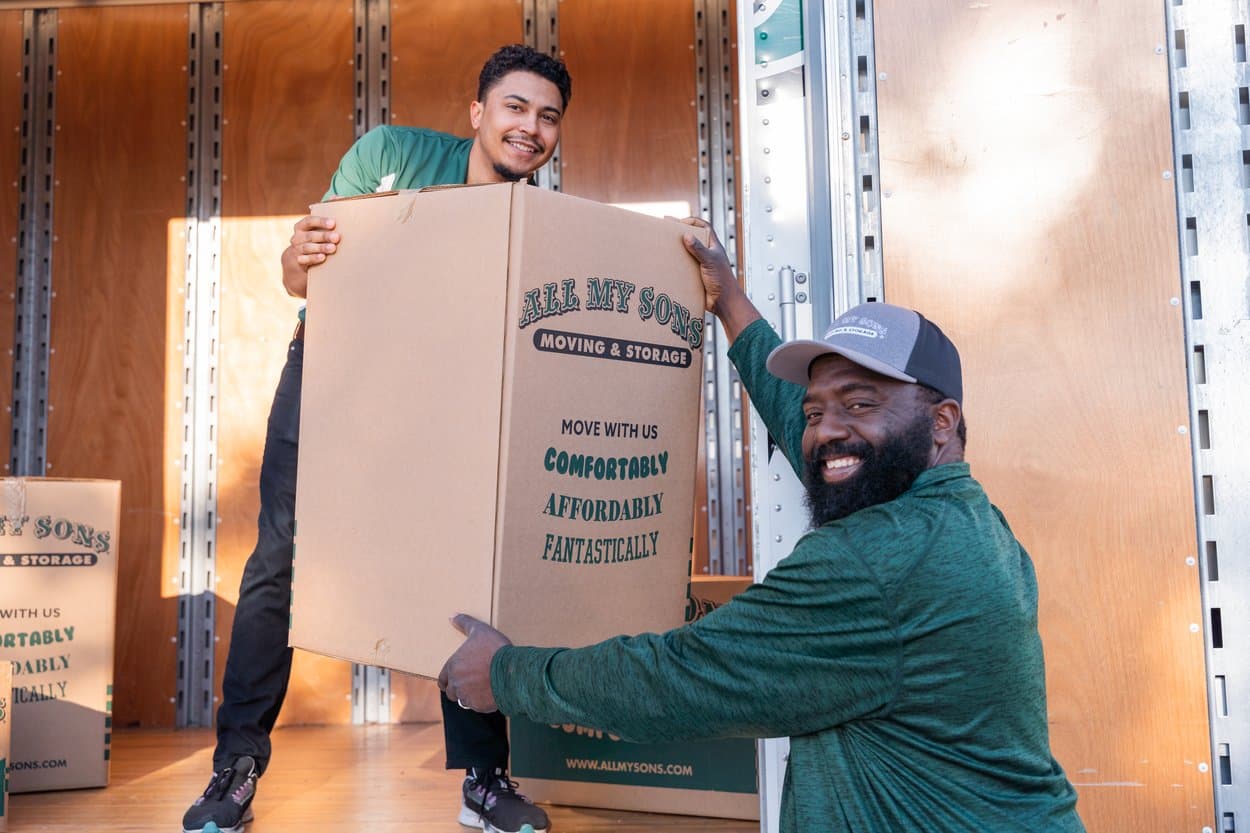Time to Move with Kids in the Mix
The experts in residential moving weigh in on making a local move or long-distance move with kids.
Moving is one of life’s most stressful events, and for young children experiencing it for the first time it can also be traumatic. Uprooting, even when necessary or for a joyful reason, means closing the doors on one chapter of life and departing from an established community. That’s a hard thing even for adults who have done it a dozen times.
The first step in any move with children is to be honest with your children and give them the space and support to feel the full range of emotions they might be experiencing. Even if your move is a happy one, your child might feel sad or anxious about leaving behind friends, familiar spaces, or current schools.
Beyond your children’s diverse sentiments about moving, the logistics of moving with kids are different from the logistics of moving with just yourself or with other adults. Your children, especially the young ones, will require attention and care during the process of moving. You will need to account for your child’s essentials when packing toys, food, and clothing. Settling into your new home might require some handholding as you explore your new neighborhood and meet new friends.
Here are some important tips to consider as you navigate your family move.

Tip 1: Get Childcare Ahead of Time
Some children may be too young to be involved in the move and will need constant care that you might not be able to provide in the thick of your moving tasks. There may even come a point during your move that tweens and younger may need supervision to ensure they remain safe and unharmed while your movers are doing all the heavy lifting.
When you are creating your moving checklist, determine when you might need childcare, whether that is while you are packing or on the day of the move. Contact your family, friends, or preferred childcare professionals ahead of time to let them know that you are moving and will need assistance. You may be able to arrange for your child to stay over with their caretaker, find a quiet space in your old or new home for the caretaker to watch your child, or send the caretaker and your child to a nearby park, library, or other neutral public space.

Tip 2: Give Your Children Moving Tasks
This is a family move, so involve the whole family in the process. The moving tasks you delegate to your children will depend on your child’s age and limitations, but there are plenty of moving tasks to perform that can be done by younger children.
If your child is a strong writer, have them write out their own moving checklist. Depending on your child’s organizational skills, you might be able to brainstorm apart or together what all needs to be completed by move day. Your child might be able to determine for themselves what of their own items they consider non-essentials to be packed immediately and what they consider essential or comfort items they would like to keep with them during the move.
Involve your child in the process of downsizing if you are planning to declutter and reorganize during your move. Allow your child a vote in what gets donated, given away, sold, or kept. When your child has a say in the downsizing process, they might feel better about letting things go.
Kids aged five and up can help pack. A simple, repetitive packing task like putting away books or media collections might work best for younger children, while the older or more responsible children can be trusted with delicate items or unusually shaped items. Children who can write should work labeling boxes while tweens and older can do their fair share of the hauling.

Tip 3: Take Time to Say Goodbye to Your Old Home
To help your children get closure on this chapter of their lives, take a moment as a family to say goodbye to your old home together. This could involve taking a video before you start packing to preserve memories of what your house looked like while you were living there. Or maybe you could simply take a moment before the moving truck drives away to walk through the empty rooms and reminisce about what made the home special. Emphasize your gratitude for the home and whatever about your neighborhood, be it the places or the people, filled this chapter of your lives with joy.
This could be an emotional moment for all of you, and it’s okay for children to cry or laugh while they process through their memories. Once you have taken your moment, load the kids in the car and tell them to wave goodbye to the house.
If children are leaving behind beloved connections like friends or family members, try to plan a time you can come back and visit them. Staying in touch is easier than ever with letters, emails, and social media, but nothing beats a face-to-face interaction. If visiting in the future is possible, encourage your children to think of the separation as temporary and go ahead and plan a time when everyone can get together again.
Even as your family closes the door on the past, you should look to the future with hope. After you say goodbye to your old place, initiate a conversation about what happy things you might be looking forward to in your next home. Allow your children to voice any fears or concerns they might have and let them know that it’s okay to feel those things. It is important, though, to emphasize that there could be many good things in the future. Frame the move as embarking on a new adventure, and let your children imagine that the unknowns could turn out to be amazing new memories too.

Tip 4: Keep Your Child’s Routines
Children need a sense of normalcy during this transition period. From the point you begin packing to the last box unloaded at your new place, try to maintain as consistent a schedule as possible.
If your child has a designated bedtime, keep them getting to bed at that time even if most of their toys and books are now in boxes. If you need to set up a sleeping bag or arrange for your child to stay somewhere during the transition, do your best to communicate to your child that bedtime is still important to honor. In the same way, if you have a time where you wake your child up, keep that time throughout the duration of the transition.
If you have any special family traditions like a daily family meal or a weekly movie night, don’t let the logistics of the move get in the way. It’s important to spend that time with your children, especially now that they might be processing difficult feelings regarding the move. When you’re in transition it can be difficult to perform family traditions the same as they usually are but try to keep the spirit of the tradition intact even if changes are necessary. For example, if you always have a home-cooked meal together at dinnertime and your entire kitchen plus the dining table is packed, get take-out and have dinner together in a public park. The most important thing to communicate in any tradition is that spending time as a family is important, and you’re on this adventure together.
If changes to the routine are necessary, like an earlier wake-up time for a school schedule that starts sooner, then try to gradually introduce the change to the routine as soon as you know it needs to be made.

Tip 5: Explore Your New Neighborhood Together
Some of the stress of moving is adjusting to a different community. Make a point to explore your new neighborhood together. Check out the local libraries, restaurants, community centers, parks, playgrounds, and gyms. Get involved in clubs, groups, churches, or nonprofits to meet people and experience fun activities. Volunteer together as a family, check out local creative classes for things like cooking, pottery, or art, and look for events that are open to all ages.
If your child is anxious about making friends, walk them through the process of introducing themselves to others and give them ample opportunities to meet other children. If you notice your child hitting it off with another child, try to introduce yourself to the child’s caretaker and see if you can help arrange further playdates. You might make a friend or two yourself.
It can be tough to be the new family on the block, why not find an excuse to introduce yourselves to your neighbors? Bake cookies or craft simple gifts to pass out as you go door to door. Alternatively, you can plan a housewarming party and invite your neighbors to drop by and say hi. You can ask your children for input on how to meet the rest of the block, and once you know more people you and your children might begin to feel more settled in the new community.

Tip 6: Continually Check-In on Your Child’s Feelings
Throughout the move, from packing to setting up your child’s new room, you should take time to ask your child how they are feeling about the process. Your child’s emotions might be mixed at any point, and that’s okay. If your child is sad or angry, don’t be in a rush to try and make them feel more optimistic. Sometimes what your child needs to alleviate negative emotions is an empathetic ear.
Don’t wait for your child to express fears or concerns, let them know that it’s okay to talk to you and give them opportunities to ask for help if they need it. Lead by example and express your own feelings about the move. This allows your child to feel validated and less alone.
Even if your child is outwardly expressing that they are fine, pay attention to how they act. Watch for changes in their behavior like poor sleep patterns or responding negatively to others. Take your child off to the side and let them know what you noticed and ask if there’s anything you can do to help.
Your child might have trouble expressing themselves verbally. If your child enjoys art, you could ask them to draw or paint a picture about the move. Children who are strong writers might be able to write letters or journal entries that better express how they feel. Be attentive to whatever medium your child chooses to communicate their feelings in.
Finally, if your child is really having a hard time with the move don’t be afraid to seek other help from friends, family, or a mental healthcare professional. There’s no shame in anyone needing extra help, including yourself and your children.

Off to Move: The New Family Adventure
While moving with kids is a challenge, your next family move doesn’t have to be a stressful experience. By planning ahead and continually monitoring your children’s emotions, you can get started on the next chapter in your family’s story with hopeful confidence. Remember to involve your children in the steps of the process they’re ready for, get childcare help if you need it at any stage of the process, and tackle your new neighborhood as a family to build your new community.
Tell your kiddos to strap in for the journey and together you can all look forward to the future.
When you’re ready to make your family move, call on the local movers with 30 years of experience helping parents and kids make a smooth relocation and contact All My Sons Moving & Storage. Our company provides all the services and resources you need to make your big move so you and your children can focus on what really matters: Settling into your new home! Get a quote online to start your family’s move and let All My Sons Moving & Storage handle all the details.
Quick Moving Tips

How to Pack Clothes for a Move
All My Sons Moving & Storage provides professional packing services and has some special tips for packing your clothing for moving.

How to Make a Seamless Business Move
Tips for pulling off your business move from the experts in commercial moving services at All My Sons Moving & Storage.

How to Pack a Computer for a Move
Here are 5 steps that should help you get your computer secured for the move.


